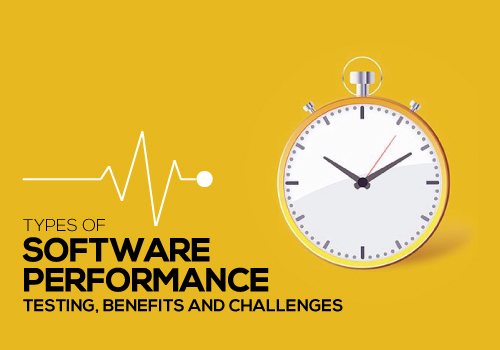
The 3 Types of Software Performance Testing, Their Benefits & Challenges
August 5th, 2016

You might be familiar with performance testing; a general term used to refer to various types of performance based testing on different devices. Software penetration testing is of different types, each of which has specific purposes. Unlike other software related tests, it is a bit complex and has its own advantages and challenges.
If you are a developer or a person doing software business, you should know about the advantages and project risks connected to different types of performance based testing. We are going to give a clear idea about the different types of testing and terms associated with software performance testing via this article.
Let’s know about Performance Testing
Why you should do performance testing? You should do performance testing to ensure that the parameters such as speed, stability, data transfer rate, efficiency, etc. of your software meet the required standards.
Recommended Read : 5 Top Factors in Website Usability Testing [must-read]
Three Types of Performance Testing
There are three types of software performance testing in general – Performance Test, Load Test, and Stress Test.
-
Performance Test
Purpose
- To make sure the speed, accuracy, and stability of the software.
- Performance test is vital to authenticate the responsiveness, scalability and reliability features of the software under test.
Advantages
- Validating the basic features of the application give you confidence to announce notable business decisions based on your software
- Testing helps you know whether the features of your software are set in such a way to please the users
- Able to detect the mismatches and rectify it before the software gets published
- Performance testing enhances your optimization and capacity planning efforts
Challenges
- Some functional errors are only visible under load. There is a chance for not detecting such errors while doing performance testing.
- Testing ends as a mere process if it is not programmed and executed carefully.
- If testing is not performed on various devices, it might cause variation in results and hence users experience difficulties.
-
Load Test
Purpose
- To validate the performance of the application on varying load conditions.
- To ensure the endurance of an application.
Advantages
- Validates the throughput needed to tackle the estimated peak load
- Verifies the efficiency of a hardware platform.
- Assess the sufficiency of a load balancer.
- Spot the concurrency related issues
- Detect functionality errors under load. Identifies functionality errors when there are load variations
- Collects data for scalability and capacity-planning purposes. Gather information for scalability purposes.
- Able to estimate whether the application is suitable for multi-tasking.
- Estimation of load capacity is possible
Challenges
- Not programmed to principally concentrate on speed of response
- Comparison of load test results is limited to similar load-related tests
Read Also : 20 Amazing Application Penetration Testing Tools For Every Tester
-
Stress Test
Purpose
- To find out the performance of an application on high load conditions.
- The real objective of stress testing is to spot bugs and error on high load condition. This enhances the trust on your product in the market.
Advantages
- Verifies whether there is the possibility for corrupting data by overstressing the application
- Able to predict how long an application can sustain without errors under peak load conditions.
- You are able to assert the safe load capacity of your application to avoid imminent failures
- Can avoid security vulnerabilities
- Able to anticipate common application failures
Challenges
- Since stress tests are not all realistic by design, the possibility of approving test results is low.
- Unable to guess how much stress is worth applying
- Chances for application or network failures are high if testing conditions is not isolated.


 Software Testing Events
Software Testing Events App Testing
App Testing Web App Testing
Web App Testing Game Testing
Game Testing Automation Testing
Automation Testing Load Testing
Load Testing Security Testing
Security Testing Performance Testing
Performance Testing Hire a Tester
Hire a Tester







